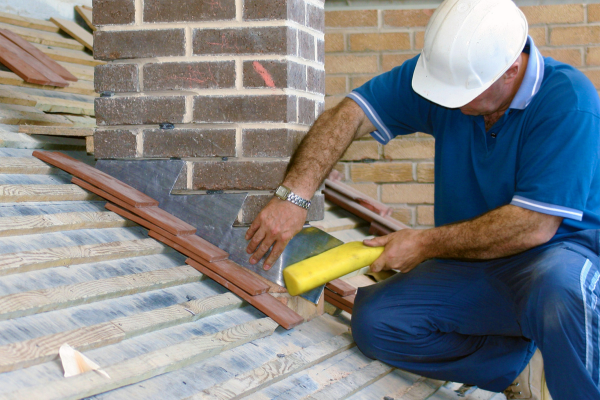Homeowners sometimes take on minor roof repairs and inspections themselves to save money. However, working on your roof can be dangerous. Safety should always be your top concern. Follow these roof safety tips to avoid hazards and minimize risk if you plan to DIY roof projects.
Use the Proper Gear
The right gear makes roof work safer. Always wear:
- Shoes with slip-resistant soles – The steeper the roof pitch, the more traction you need. Shoes with soft, flexible soles grip better. Avoid smooth-soled shoes.
- Protective eyewear – Glasses or goggles prevent eye injuries from debris or nail gun backfire.
- Tough gloves – Durable gloves protect your hands from sharp materials and hot surfaces.
- Long pants and sleeves – Cover skin to avoid scrapes and sunburn.
A fall arrest system with an anchor, harness, and roofers’ belt is also essential for steeply pitched roofs. Never rely on makeshift anchors like vents or chimneys – they can pull free if you fall.
Check the Weather Forecast
Never attempt roof work on rainy, snowy, or extremely windy days. Wet and icy conditions cause dangerous slipping hazards. Work is also prohibited during lightning storms. Check the weather forecast and pick mild, sunny days for DIY roof projects.

Handle Ladders Safely
Many roofing accidents involve ladders. To use them safely:
- Place ladders on stable, level ground and secure the base from slipping.
- Extend the ladder at least 3 feet above the roof edge for proper handholds.
- Climb slowly with three points of contact on the ladder at all times.
- Weight the ladder bottom to prevent tipping backwards.
- Avoid over-reaching from the ladder – reposition it frequently.
Inspect the Roof First
Before stepping onto the roof, circle the home and conduct a thorough visual inspection at ground level using binoculars. Look for weak areas, leaks, loose shingles, or other hazards. Identify potential risks before leaving the ground.
Maintain Proper Footing
Walking on a roof is precarious. Give careful attention to your footing by:
- Stepping on the balls of your feet and taking slow, short steps.
- Avoiding stepping on loose debris or moss-covered areas.
- Not walking backwards – turn fully around instead.
- Staying low when walking up steep slopes.
- Sitting down and sliding when moving down pitched roofs.
Minimize Time Spent on the Roof
Don’t linger on the roof any longer than required. Have all tools and materials organized and within reach to complete tasks efficiently. The longer you stay on the roof, the greater the fatigue and risk of slipping. Get the job done and back down the ladder.
Leave Complex Jobs to Professionals
Although competent DIYers can handle basic tasks, extensive repairs or full roof replacements should only be done by licensed professionals. Attempting complex roof work without experience and proper equipment is incredibly dangerous. The cost of hiring a professional roofer is money well spent compared to the risk of a devastating injury from a roof fall.
Think Safety First When Working on Your Roof
While these safety tips will help minimize dangers when working on your roof, the best advice is to avoid getting on the roof altogether unless absolutely necessary. For all but the smallest DIY repairs, you’re better off calling a professional, insured roofer like ProCraft Exteriors. Their expertise allows needed roof work to be completed safely and efficiently so you can avoid roof hazards. Don’t risk life and limb – trust the professionals instead!

